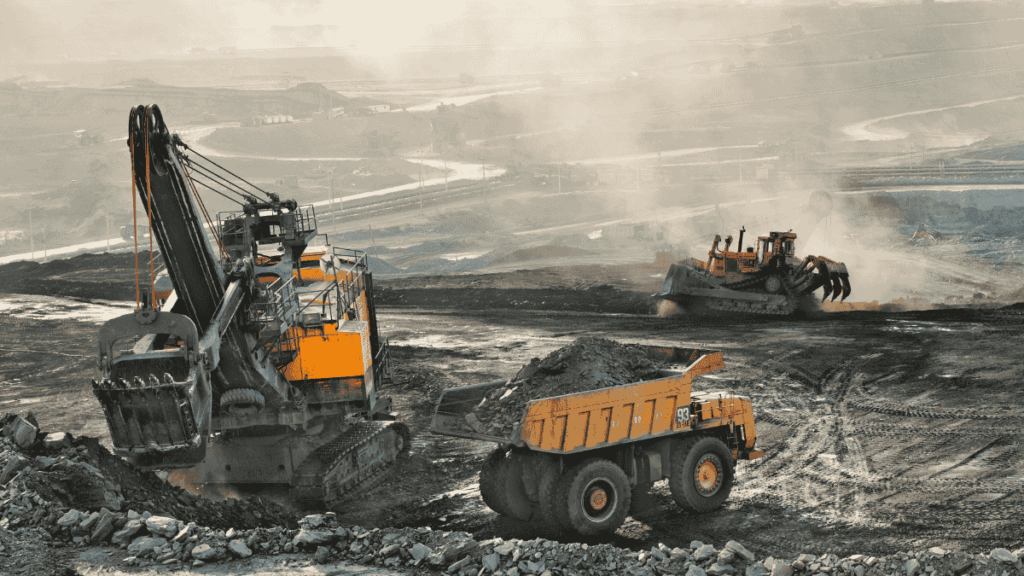NEW DELHI: In November 2023, India started auction of critical minerals, and in March this year, the country also saw the first-ever auction of exploration licences for rare earth, zinc, diamond, copper, and platinum-group elements. Also, the first-ever auction of undersea mineral reserves took place in November 2024.
The auction of critical mineral (CM) assets was, however, interrupted at times, largely because of lack of sufficient investor interest. In December 2024, for instance, the fourth round had to be cancelled before re-auctioning. In fact, the problems extend to all non-fuel minerals, despite key “investor-friendly reforms” like composite licensing and tenure certainty unleashed a decade ago. It has also been difficult to start production at the auctioned mines.
A key question is whether auction is the pragmatic method to attract investors, especially in the critical minerals sector, where India’s resources are scattered, difficult to extract, and commercial viability of the ventures is rather uncertain. Of 55 CM blocks offered this far, 34 found takers, but industry players are concerned about “lack of information about the blocks, low resource quantities, and absence of assured market or downstream value-addition.
The CM blocks offered lack reassuring (advanced) “G1 or G2 level” geological data. These assets are just at the “G4 level” which is based solely on surface exposure or limited channel sampling data, said an expert on condition of anonymity. “There is no additional reference data like shallow drill holes, adjacent mining, old workings, or geophysical surveys which are necessary for investors to be confident of,” he added.
There is a growing demand for shifting from the incipient auction regime to other concession methods employed in mineral-rich parts of the world. BK Bhatia, additional secretary general at Federation of Indian Mineral Industries, said first-come-first-served model could be more investor-friendly.
‘Emerging sectors offer growth opportunities beyond index levels,’ says Prateek Agrawal
Suvendu Bose, partner at Grant Thornton Bharat also believes there is a need to try alternative mechanisms for allocation of CM blocks. He suggested that exploration companies may be granted the right to mine and produce. Also, exploration costs may be reimbursed to avoid sunk costs from encountering negative areas.
Experts caution against using the same methods for allocations of both critical and bulk minerals. “We should create the climate for India’s best metals and CM companies to be at the forefront to explore CM blocks. Once the exploration efforts bear fruit, the authorities could opt for a price discovery model,” Arun Misra, CEO at Hindustan Zinc and ED at Vedanta said. According to him, from investors’ standpoint, such an approach would mitigate the risks associated with “limited” geological exploration data.
“The recent geopolitical developments with China curbing exports of magnets raises the urgency for India to explore its extensive CM reserves. This includes fast-tracking exploration and licensing deals in India for private and public entities while creating new avenues in overseas markets,” Misra added.
Industry circles feel that the first-ever auction of exploration licences for 13 critical mineral blocks along with artificial intelligence-enabled targeting is a pragmatic move.
High costs and “frequent changes” in government policy have also deterred major domestic and international mining giants from entering the Indian market, another source said. One prominent instance was the aborted auction of a lithium block in Jammu & Kashmir’s Reasi district. The ministry of mines had to tell the Geological Survey of India (GSI) to conduct a re-exploration of the 5.9 million tonne asset, after repeated setbacks to the efforts to put the reserves up for auction again.
Similarly, a goal has been set to reach at least the G2 level of exploration before proceeding to re-auction the Salal-Haimna lithium/titanium/bauxite block. Also, the results of inaugural auction of offshore CM blocks (construction sand, lime mud, poly-metallic nodules and crusts) in the Arabian and Andaman seas have been deferred to September, in a sign of lukewarm response.
As for rare earth elements (REE), India’s potential lies primarily in monazite found in some coastal areas with “light” REE deposits and inland places with “high” REE deposits. For the record, REE resources in India are the fifth largest in the world, but these are significantly “lean” with respect to grade and tied with radioactivity making the extraction long, complex and expensive, experts noted. Further, Indian resources not always available in extractable quantities.
In the case of rare earths, a long-drawn ecosystem in the value chain is required to move from reserves to finished products with a large number of processes plants. This includes obtaining statutory clearances, mining, mineral beneficiation, RE extraction, separation, refining in oxides, metal extraction and alloy making, according to experts.
While India has facilities from mining to separation and refining in oxide form and also the capability of metal extraction, industrial-scale capacities are non-existent.
According to Rajat Verma, Founder and CEO at Lohum early-stage financial support, including capital and operational expenditure subsidies would help domestic players scale up their processing and recycling capacity.
The Union Budget 2024–25 removed customs duties on 25 critical minerals, including lithium, nickel, REE and molybdenum, and 2025–26 Budget provided exemption for cobalt powder and waste, scrap of lithium-ion battery, lead, and 12 more minerals. This will help lower input costs and aid processing. However, high GST rates (up to 18%) on battery scrap could discourage informal players from joining the sector and reduce profitability for recyclers, Verma said.
Source: The Financial Express

 NHAI Plans Public InvIT, TOT Revamp
NHAI Plans Public InvIT, TOT Revamp 